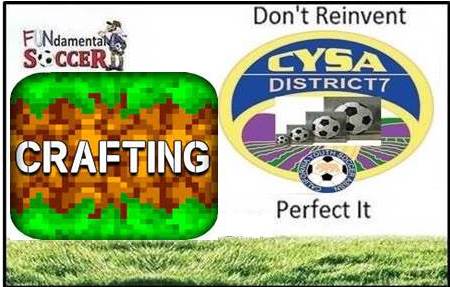As a coach, it is essential to structure practices to maximize engagement and learning for your young athletes. By creating a positive and stimulating environment, you can help your athletes develop the physical, cognitive, social, and emotional skills necessary for success both on and off the field.

One key element of effective practice structuring is creating a clear and achievable goal for each session. This goal should be communicated clearly to your athletes at the outset of the practice and broken down into smaller, achievable objectives. For example, suppose the overall goal is to improve passing skills in soccer. In that case, the session might focus on specific pass types or incorporate activities emphasizing passing accuracy and technique.

Another important factor in practice structuring is providing opportunities for skill repetition and reinforcement. Research has shown that repeated practice of skills leads to greater skill acquisition and retention (Magill & Anderson, 2014). To achieve this, coaches should design activities and activities that allow athletes to practice and reinforce their skills. Repetition can be made fun and engaging by incorporating games and challenges that require the use of specific skills.
But how do you get the maximum amount of reps per practice while keeping your athletes interested and putting in a high effort?

Make it competitive.
When it comes to getting the maximum amount of repetitions per practice while keeping athletes interested and motivated, making activities competitive can be an effective approach. Adding an element of competition introduces a sense of pressure and anxiety, similar to what athletes experience during real games. This makes the practice more engaging and helps athletes develop the ability to perform under pressure.
Here are some ways to incorporate competition into activities:

Time-based challenges: Set a specific time limit for athletes to complete an activity or task. Challenge them to improve their performance by beating their previous times or competing against each other to see who can complete the task in the shortest time.
- Dribbling activity: Set up a course with cones and have athletes dribble a soccer ball through the course as quickly as possible. Time each athlete’s performance and challenge them to beat their own time in subsequent attempts.
- Shooting activity: Set a time limit for athletes to make as many basketball shots as they can from different spots on the court. Encourage them to improve their score each time.
- Sprint activities: Set up a marked distance and challenge athletes to complete a sprint within a specific time frame. They can compete against their own best times or race against each other.
Scoring system: Assign points to different levels of performance or successful execution of skills. Athletes can earn points individually or as teams, creating a competitive environment. This encourages athletes to push themselves to achieve higher scores and reinforces the importance of skill mastery.
Soccer juggling challenge: Award points based on the number of successful consecutive juggles players can perform. Players earn more points for using different surfaces of their bodies to juggle the ball.
Soccer shooting accuracy: Set up targets in the goal with different point values. Athletes earn points based on their ability to score by hitting specific targets during shooting activities.

Small-sided games: Divide athletes into smaller teams and create mini-games or modified versions of the sport that emphasize specific skills. These games can be designed to be fast-paced and highly competitive, encouraging athletes to apply and reinforce their skills in a dynamic and challenging setting.
Soccer passing game: Divide players into teams and set up a small field. Emphasize passing skills by allowing only a limited number of touches before the ball must be passed. Encourage quick and accurate passing to score goals.
Soccer possession game: Split players into teams and play a small-sided game where the objective is to maintain possession of the ball for as long as possible. This game emphasizes quick passing, communication, and teamwork.
Elimination or knockout-style activities: Create activities where athletes compete against each other, and the player with the lowest performance or outcome is eliminated from the activity. This adds a sense of urgency and motivation for athletes to perform well and avoid elimination.
Soccer dribbling race: Set up a course and have players race against each other while dribbling the ball. The player with the slowest time in each round is eliminated until only one player remains.
Leaderboards and rankings: Keep track of individual or team performances using leaderboards or rankings. Athletes can see their progress and compare themselves to others, fostering a competitive spirit and driving them to improve their skills.
It is also important to incorporate variety and creativity into practice sessions. Monotony and boredom can lead to disengagement and decreased motivation, so coaches should aim to keep practices fresh and exciting. This can be achieved by varying the activities, incorporating new activities or games, and creating an environment that encourages experimentation and creativity.
Remember, it is important to strike a balance between competition and enjoyment. These are kids, not adults; the more repetitive something is, the less likely a child will want to put forth their best effort.
You can disguise the repetitiveness by adding nuance and competition. While competition can be motivating, it should not become overly stressful or discourage athletes…then again, you want your athletes to experience stress in a controlled environment where you can coach them without your own stresses of an actual game. Coaches should ensure a positive and supportive environment where athletes feel encouraged to take risks, make mistakes, and learn from them. By making activities competitive and fun, coaches can maximize the number of repetitions while maintaining athletes’ interest and effort levels.

During these competitive times of practice, coaches should provide regular and constructive feedback to their athletes to further promote engagement and learning. A word of caution, though. Be mindful of a child in a zone of learning. You will see it when they are focused and not deterred by mistakes. Let them stay in the zone as long as possible! When you do give feedback, it should be specific, timely, short-winded, and focused on areas for improvement. Athletes should also be given opportunities to reflect on their performance and identify areas for personal growth.
Creating a safe and supportive environment that encourages risk-taking and experimentation is important. Mistakes and failures are natural parts of the learning process, and athletes should feel comfortable taking risks and trying new things without fear of judgment or criticism. Coaches can foster a growth mindset and promote resilience by framing mistakes as opportunities for growth and learning.
Structuring practices for maximum engagement and learning is essential to effective coaching in youth sports. By creating clear goals, providing ample opportunities for skill repetition and reinforcement, incorporating variety and creativity, providing regular feedback, and fostering a safe and supportive environment, coaches can create an optimal environment for young athletes to develop their skills and reach their full potential.
Excerpt from
”The Empowered Coach: How to Make a Lasting Impact on a Student-Athlete”




